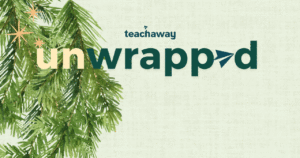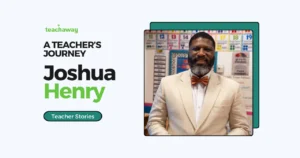About The Author
Jane has considerable experience in the world of international education. She first became involved in teacher and educational leader recruitment while working in Abu Dhabi. Over eight years, Jane worked with colleagues and agencies organizing extensive recruitment campaigns around the globe. Today, Jane uses her knowledge and experience to support schools and organizations in the design and fulfilment of their recruitment goals.
Many prospective teachers look forward to it. Some even get excited. However, most will admit that questions around equity and diversity during their interview arouse anxiety.
Regardless of how often applicant teachers prepare, script, and practice, their minds and memory somehow falter when the recruitment agent asks, “So, let’s talk about inclusion, diversity, and equity. As a teacher, how do you feel about these issues, and what experiences have you had in addressing diversity, equity, and inclusion in your professional practice?”
Global stats behind the growing need for DEIJ in education
Today, teachers and school organizations around the globe know that addressing issues of diversity, equity, and inclusion (DEI) in education is a priority. And rightly so.
A January 2023 OECD report highlights that school organizations and their wider school communities are increasingly challenged with inclusion and diversity issues arising from global events such as the recent pandemic, migration, war, and climate change.
The report calls for a universal understanding and acceptance of the reality of DEI issues in our global society and the importance of addressing these issues in all of our endeavours, including, and especially, in education.
UNESCO’s commitment to diversity and inclusion is an excellent place to start. Their definition states simply, “the need to provide equitable and inclusive quality education for all learners.” However, as OECD points out (and most teachers are learning), there is considerable variety in how education systems around the world define and prioritize DEI issues.
How has the definition of inclusion been updated?
This is unsurprising, given that that understanding has evolved over the years. For example, 15 years ago, inclusion in education referred primarily to integrating students with special learning needs into a classroom. Today, inclusion means addressing the diverse needs of ALL learners in all classrooms.
In addition, the range and depth of perceptions around DEI issues, often informed by individual experiences, is vast. Regardless, schools know this, and work hard to ensure that their vision and goals reflect the values of their context and their local community.
DEI values are inherent in any intercultural education (IE) discussion, a concept highly relevant to international schools. In their 2021 study of inclusive intercultural education in multi-cultural societies, researchers Caárdenas-Rodriguez and Terrón-Caro define intercultural education as, “an educational model that champions cultural diversity and the advantages it offers within an educational context.”
In a recent study on international school teachers’ perceptions of intercultural education, when asked about their understanding of and level of competence in addressing issues around intercultural education, most teachers talked about the importance and benefits of understanding diverse cultures rather than sharing specifics about their experience working with students to understand the impact of systemic structural and power imbalances confronting society today.
Tips for addressing diversity, equity, and inclusion during a teaching job interview
So, knowing the range of understanding and prioritization of issues around DEI, how does the prospective teacher, anxiously waiting for his or her interview, prepare a suitable response to the question above? As with so much else, the answer is simply “Honesty. Know yourself.”
Many years ago, a respected colleague advised applicants to do their homework so that they had a solid understanding of their strengths and limitations before attending any interview. He succinctly advised them that, “This is your chance to tell your story. Don’t talk about what kind of teacher you want to be. Talk about what kind of teacher you are.”
My colleague advised teacher applicants to conduct a self-audit and reflect on their background, educational training and experiences, and interactions with students, parents, colleagues, and friends. He stressed the importance of being honest while mapping out their journey.
With this in mind, teachers aspiring for an international teaching job can begin by reflecting on the following questions as they relate to issues of equity, diversity, and inclusion in education today:
- What does DEI mean to me personally and professionally? How has my understanding of DEI evolved? Been challenged?
- What are my beliefs about addressing DEI issues in the classroom. Why?
- How do I create a learning climate that values student diversity and difference?
- What are my experiences in integrating DEI issues in the curriculum? My teaching practices? My choice of instructional materials? My assessment practices?
- What experiences have I had working with marginalized students – economically, socially, academically?
- What can teachers do to support a school’s or school organization’s equity statement? What have I done, and how did the students respond?
Conclusion
Teachers everywhere must understand the importance of a school’s responsibility to create a culture of diversity, equity, and inclusion. Regardless of the interview, thoroughly understanding your values, beliefs, and experiences with DEI issues can enable teacher applicants to tell their story with confidence and calm. That’s a wonderful place to start.



